
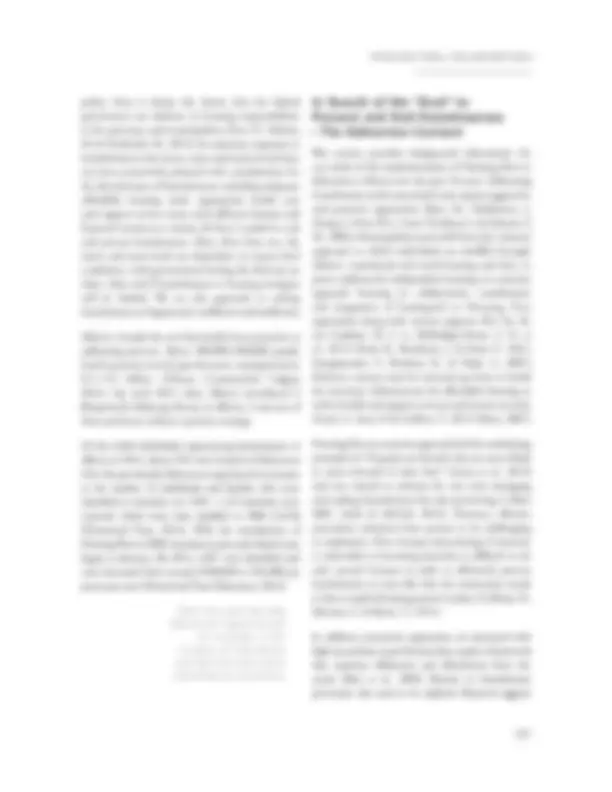
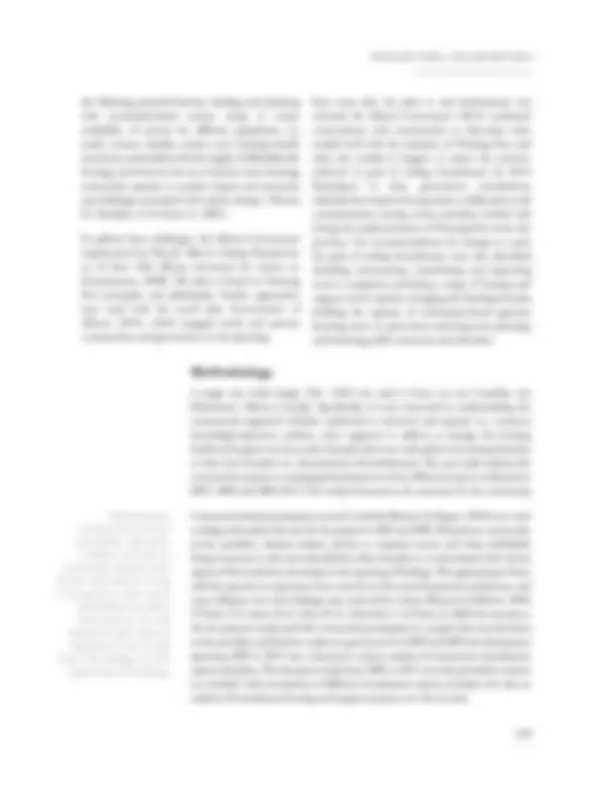



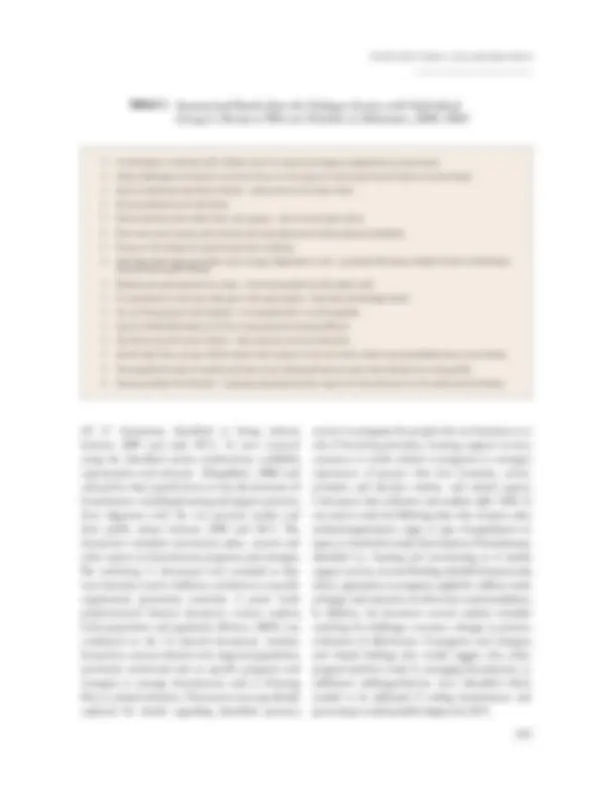



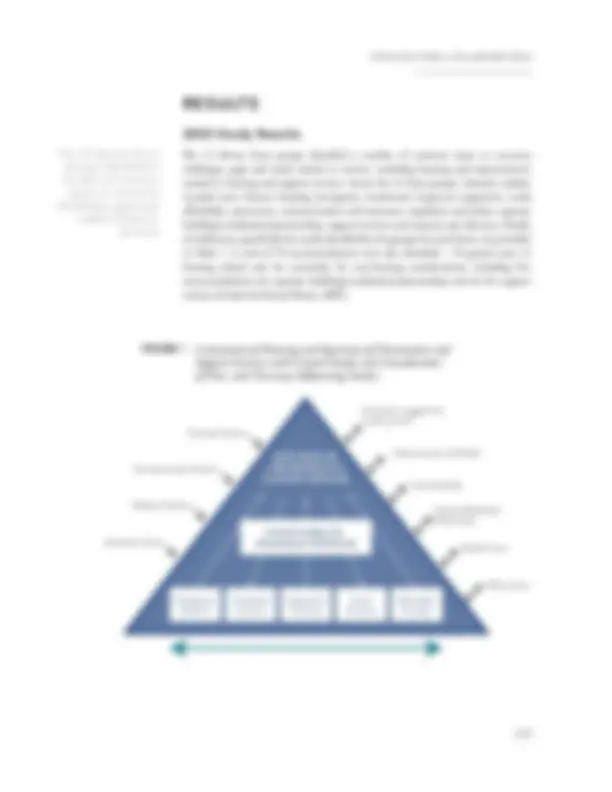
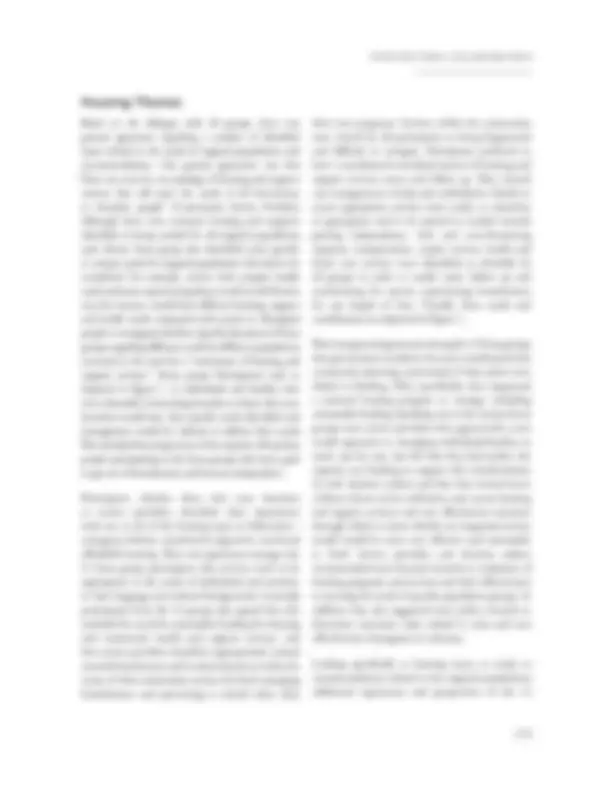


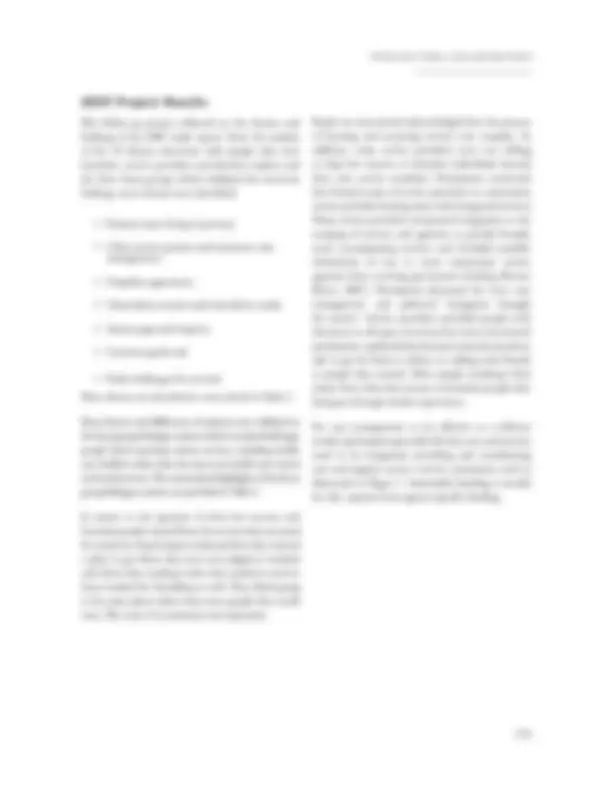
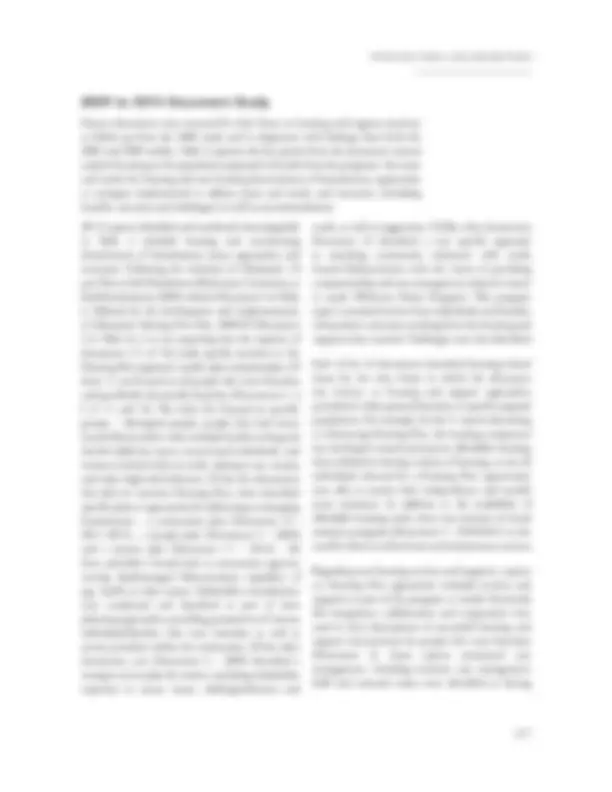
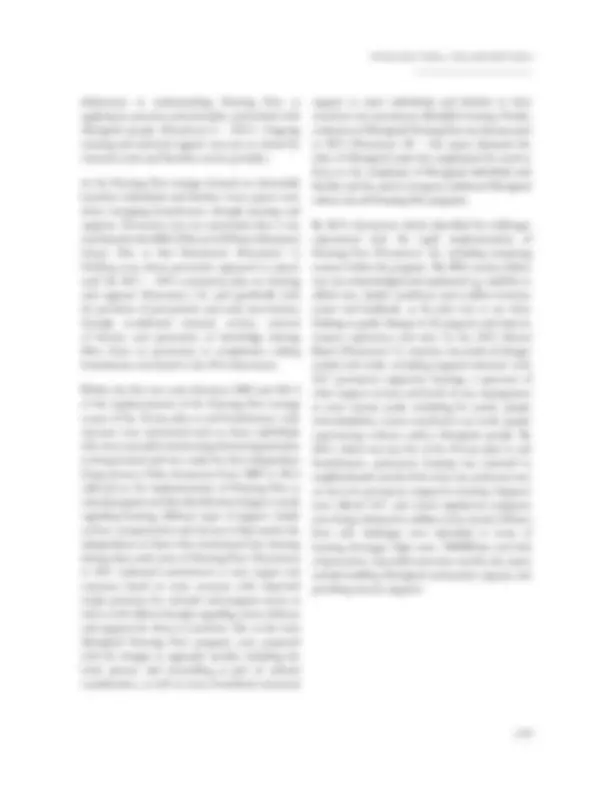



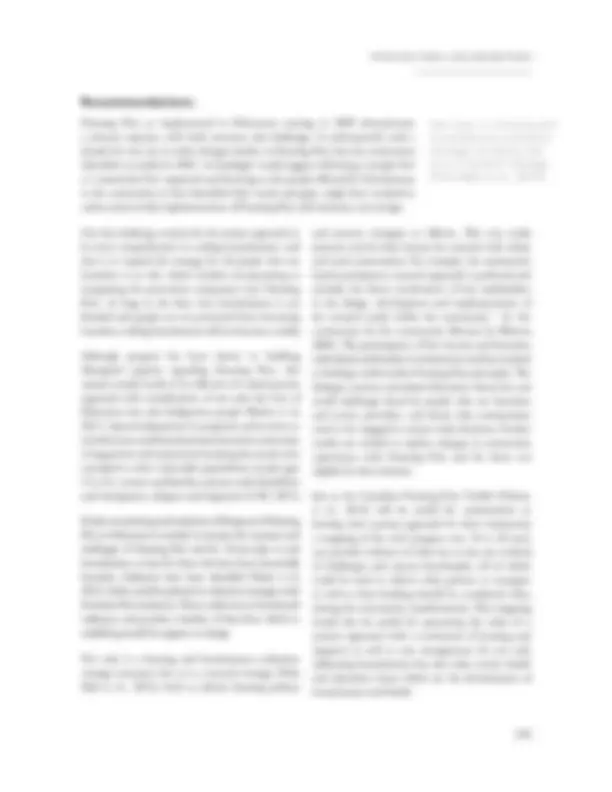






Study with the several resources on Docsity

Earn points by helping other students or get them with a premium plan


Prepare for your exams
Study with the several resources on Docsity

Earn points to download
Earn points by helping other students or get them with a premium plan
Community
Ask the community for help and clear up your study doubts
Discover the best universities in your country according to Docsity users
Free resources
Download our free guides on studying techniques, anxiety management strategies, and thesis advice from Docsity tutors
An overview of inter-sectoral collaborations aimed at addressing homelessness in Edmonton between 2008 and 2015. It covers various reports, dialogue sessions, and strategic plans that identified determinants of homelessness, approaches to address needs and gaps, and outcomes or recommendations. The focus is on housing and non-housing issues, including affordable housing, transportation, education, and community health and support services.
Typology: Study notes
1 / 32

This page cannot be seen from the preview
Don't miss anything!

























Kathy KOVACS BURNS & Gary GORDON is deliberately similar to the term, ‘determinants of health.’ The term invokes the multiple and interlocking social and structural factors that impact the capacity and resilience of individuals or families living in poverty and/or homelessness/ housing insecurity. There is a direct relationship between the determinants of homelessness and the determinants of health. Both include income status, housing, personal and environmental factors. Both impact on health and well-being of individuals and families. Exploring how best to manage or balance the determinants of health and homelessness is an essential part of preventing or ending homelessness. By investigating the experiences of individuals and families experiencing homelessness, the complexity of homelessness, the challenges living with it or addressing it and the lack of public policies to support a systems approach to successfully resolve it are revealed (Hulchanski, D. J., Campsie, P., Chau, S., Hwang, S. W. & Paradis, E., 2009). Although different Canadian cities had their own community plans with various housing and support programs (e.g. emergency shelters
People living in poverty and/or those who are homeless face many more challenges and obstacles than the average person. This includes their increased vulnerability for poor health, multiple social problems, diminished quality of life, higher morbidity and premature mortality (Guirguis- Young, McNeil & Hwang, 2014; Mills, C., Zavaleta, D. & Samuel, K., 2014; Phipps, 2003). They also face social exclusion and isolation (Mills et al., 2014), inequality, discrimination and stereotyping by landlords, health and support providers and the general public in their communities (Khandor, E., Mason, K., Chambers, C., Rossiter, K., Cowan, L. & Hwang, S. W., 2011). Their experiences walking into public facilities, accessing traditional health and social services, renting and being considered for employment are often negative. In many instances there are discrepancies between what people who are homeless need or want, what service providers can offer and what the provincial or local governments can afford or support as best practices (Shinn, 2007). In this chapter, we refer to these conditions as the ‘determinants of homelessness^1 ’ – a term that
level)? What further adaptations or changes were or are needed for a strategy like Housing First to be more effective at addressing micro, meso and macro system challenges and staying on course to end and prevent homelessness in 10 years? These questions are the focus of this chapter. The authors apply a system-wide analytical lens (i.e. examining responses at the micro, meso and macro levels), seeking the experiential knowledge of people who were homeless, service providers and decision makers. We situate our research in a case study of one city, highlighting its experience and outcomes with managing homelessness as various programs and strategies, including Housing First, were implemented over a 10-year time frame between 2005 and 2015. We draw on data from three separate projects as part of the case study. We also explore the successes, challenges and barriers related to managing or ending homelessness. Recommendations are discussed in the context of what we have learned from the three projects in this case study which provide data over the 10 years from 2005 to 2015 regarding specific and system-wide decisions and changes in practices aimed at preventing and ending homelessness. as well as supportive, transitional, social and affordable housing), to address the various challenges and needs of people who were at risk of becoming homeless and those who were currently homeless, the Housing First strategy was the first opportunity to pilot the systems approach across multiple cities in Canada with federal, provincial and municipal supports for the goal to end homelessness in 10 years. Considering the various housing and support programs implemented over the past decade, including the Housing First strategy, we pose some questions worthy of a retrospective investigation within one Canadian city: What have we learned over the past decade about the determinants of homelessness and related experiences of those delivering and receiving the various programs and strategies to manage the determinants and, in turn, manage or prevent homelessness? What has been the impact or outcomes of various programs and strategies implemented over this past decade, including Housing First, on managing or reducing homelessness and, specifically, on the experiences of people at risk of becoming homeless or who were homeless (micro level), service providers and the broader community (meso level) and government decision makers (macro Homelessness is a community affair, involving individuals, families and community service providers.
Homelessness is a community affair, involving individuals, families and community service providers. Each of these groups come into the relationship dealing with many unknowns but sharing a goal to address the determinants of homelessness (Guirguis-Younger, M., McNeil, R. & Hwang, S.W., 2014; Hwang, 2009; Mills et al., 2014; Oudshoorn, A., Ward-Griffin, C., Poland, B. et al., 2013). The first challenge in addressing the determinants of homelessness is to identify individuals or families as being homeless and in need of housing and other services. However, homeless counts are point-in-time estimates, which often underestimate those who are precariously housed. Further, the affordable housing supply may be limited when demand is high. Community capacity in terms of human and other resources providing health and social supports and services in safe and appropriate spaces are also limited (Oudshoorn et al, 2013). The biggest challenges are associated with policy and funding. Without a national agreement to support an affordable housing
Four years after the plan to end homelessness was initiated, the Alberta Government (2012) conducted conversations with communities to determine what worked well with the initiation of Housing First and what else needed to happen to ensure the province achieved its goal of ending homelessness by 2019. Participants in these government consultations indicated that improved cooperation, collaboration and communication among service providers worked well during the implementation of Housing First across the province. Ten recommendations for changes to reach the goal of ending homelessness were also identified, including restructuring, streamlining and improving access to programs; providing a range of housing and support service options; changing the funding formula; building the capacity of community-based agencies; focusing more on prevention and long-term planning; and initiating public awareness and education. the following potential barriers: funding and planning with community-based services trying to ensure availability of services for different populations (i.e. youth, women, families, seniors, etc.); housing benefit restrictions, particularly with the supply of affordable safe housing; restrictions in the use of private sector housing; community capacity to monitor impact and outcomes; and challenges associated with culture change ( Pawson, H., Davidson, E. & Netto, G., 2007). To address these challenges, the Alberta Government implemented its Plan for Alberta: Ending Homelessness in 10 Years (The Alberta Secretariat for Action on Homelessness, 2008). The plan is based on Housing First principles and philosophy. Similar approaches were used with the youth plan (Government of Alberta, 2014), which engaged youth and parents, communities and government in the planning.
A single case study design (Yin, 1994) was used to focus on one Canadian city (Edmonton, Alberta, Canada). Specifically, we were interested in understanding the community’s approach (whether traditional or systemic) and capacity (i.e. resources, knowledge/experience, policies, other supports) to address or manage the housing, health and support services needs of people who were vulnerable to becoming homeless or who were homeless (i.e. determinants of homelessness). The case study explores the community response to managing homelessness in three different projects conducted in 2005, 2009 and 2009-2015. Our analysis focused on the outcomes for the community. Community-based participatory research methods (Bennett & Rogers, 2004) were used to design and explore this case for the projects in 2005 and 2009. Researchers, community service providers, decision makers, private or corporate sectors and those individuals living in poverty or who were identified as either homeless or at risk assisted with various aspects of the study from the design to the reporting of findings. This approach gave those with the expertise or experience more control over the research questions and process, and more influence over how findings were used and by whom (Bennett & Roberts, 2004; O’Toole, T. P., Aaron, K. F., Chin, M. H., Horowitz, C. & Tyson, F., 2003). In contrast to the two projects conducted with community participants (i.e. people who were homeless, service providers and decision makers in government) in 2005 and 2009, the third project spanning 2009 to 2015 was a document content analysis of community homelessness reports and plans. The document study from 2009 to 2015 not only provided a contrast as a method, with examination of different homelessness reports and plans, but also an analysis of homelessness housing and support practices over the six years. Researchers, community service providers, decision makers, private or corporate sectors and those individuals living in poverty or who were identified as either homeless or at risk assisted with various aspects of the study from the design to the reporting of findings.
For the 2009 project, participants were purposely selected for interviews and focus groups pursuing the same focus and questions as pursued in the 2005 study. A total of 16 service providers, three decision makers and 10 homeless individuals (representing seniors, youth, single males and females, Aboriginal people, immigrants, women who experienced violence and those with mental health and addictions issues), and three individuals living in poverty (of which one had disabilities and two were families) were interviewed. Three focus groups were set up with some of the same people and others to validate the interview findings
Participants for the 2005 and 2009 projects were purposive samples of people living in poverty and vulnerable to becoming homeless, those who were homeless, various community health and support service providers, housing developers and landlords, and decision makers in federal, provincial and municipal governments. They were accessed through community contacts and snowball sampling methodologies. For the 2005 project, 12 dialogue or focus groups were set up, each focused on experiences of targeted populations – seniors, youth and a separate group of students, families, singles, Aboriginal people, immigrants, people who are deinstitutionalized (from prison/correctional facilities or mental health institutions), persons with disabilities, persons with mental health issues, persons with addictions and victims of family violence. Each of these groups except the students were mixed or diverse groups consisting of 15 to 20 people of which two to five were individuals/families who were vulnerable or homeless. Other participants in these focus groups included housing providers, community health and support service providers as well as professionals, government decision makers and landlords or guardians. These larger than usual non-homogeneous focus groups were intentionally structured to provide the necessary diversity of stakeholder experiences and perceptions regarding the varied issues and recommendations for targeted populations. Everyone in each group was given an opportunity to provide input on each question. Questions were the same for each focus group to ensure comparability of responses across the 12 groups. Specifically for students, a town hall session was initially held at a post-secondary institution (with over 100 students in attendance). These students were asked to self-identify if they were interested in taking part in a focus group to discuss identified issues, needs and recommendations in more detail. Eleven self-identified students consented to take part in a focus group. “If people are housed, they are more likely to move forward in their lives.” -Gaetz et al.
HOUSING Long-term supportive housing – need for:
THEMES DESCRIPTORS The issue – living in poverty “Being poor is a full-time job” (quote from person living in poverty) requiring support from different sources. Identifying with the process and outcomes, not the label of ‘case management’
RESEARCH AND ADVOCACY Need for:
TABLE 4. A PLACE TO CALL HOME: EDMONTON’S 10-YEAR PLAN TO END HOMELESSNESS, EDMONTON COMMITTEE TO END HOMELESSNESS, 2009 POPULATIONS IDENTIFIED/ TARGETED ISSUES OR IDENTIFIED RESULTS FOR DETERMINANTS OF HOMELESSNESS (^) DESCRIBED TO ADDRESSAPPROACHES HOUSING NON-HOUSING^ NEEDS & GAPS All people who homeless but chronically homeless for Housing First Permanent housing options; adequate supply of permanent, affordable housing; emergency accommodation; rapid transitioning Appropriate supports that are accessible; support with housing to transition people into permanent housing; prevention of homelessness Housing First; prevention; governance structure; implementation process; develops community capacity; promotes collaboration, innovation & cost-effectiveness; measures progress; Streets to Homes program OUTCOMES OR RECOMMENDATIONS Homeless Commission will produce an annual progress report – five goals identified in plan TABLE 4. THE WAY WE LIVE — EDMONTON’S PEOPLE PLAN — THE QUALITY OF LIFE NEEDS & PRIORITIES OF EDMONTONIANS FACING SOCIAL & ECONOMIC BARRIERS, EDMONTON SOCIAL PLANNING COUNCIL FOR THE CITY OF EDMONTON, 2009 POPULATIONS IDENTIFIED/ TARGETED ISSUES OR IDENTIFIED RESULTS FOR DETERMINANTS OF HOMELESSNESS (^) DESCRIBED TO ADDRESSAPPROACHES HOUSING NON-HOUSING^ NEEDS & GAPS Disadvantaged Edmontonians – those facing social, economic cultural barriers to a good quality of life Housing – dominant issue in this book with primary concerns focused on physical condition and quality of housing, availability and affordability of housing and issues regarding emergency housing; affordable units in new housing developments Transportation, services and roads; efficiency of transit service; affordability of public transit; DATS service and its affordability Affordable educational opportunities, child care and after-school care could be improved. Safety of neighborhoods Seven focused discussion groups in partnership with community agencies that serve disadvantaged Edmontonians, including seniors, youths, mental health clients, immigrants and homeless or low-income Edmontonians. The ESPC also conducted a quality of life survey, which asked people to rate the importance of, and their satisfaction with, a variety of components of quality of life OUTCOMES OR RECOMMENDATIONS Key solutions identified for housing, transportation, affordability and safety
TABLE 4
TABLE 4. PERSPECTIVES ON THE HOUSING FIRST PROGRAM WITH INDIGENOUS PARTICIPANTS, BODOR, CHEWKA, SMITH-WINDSOR, CONLEY & PEREIRA, BLUE QUILLS FIRST NATIONS COLLEGE, 2011 POPULATIONS IDENTIFIED/ TARGETED ISSUES OR IDENTIFIED RESULTS FOR DETERMINANTS OF HOMELESSNESS (^) DESCRIBED TO ADDRESSAPPROACHES HOUSING NON-HOUSING^ NEEDS & GAPS Aboriginal homeless people Indigenous Housing First program and program staff learnings Relational and therapeutic supports; trauma resources; indigenous staffing issues; staff training Housing First program model and principles; circle process; storytelling OUTCOMES OR RECOMMENDATIONS Indigenous Housing First program learnings: formalizing structures, staffing and processes to assist participants, including staff and clients, with Indigenous identify development; Homeward Trust organizational learnings; broader policy and research TABLE 4. HOUSING FIRST — ANNUAL SERVICE PLAN, HOMEWARD TRUST EDMONTON, 2010/ POPULATIONS IDENTIFIED/ TARGETED ISSUES OR IDENTIFIED RESULTS FOR DETERMINANTS OF HOMELESSNESS APPROACHES DESCRIBED TO ADDRESS HOUSING NON-HOUSING NEEDS & GAPS All individuals/families who are homeless in Edmonton and meet the criteria of Housing First Since start of Housing First in Edmonton in 2009, almost 900 people were housed in safe, permanent and affordable housing. Housing assistance – landlords and property managers in agreement with Housing First; rental A assistance program successfully launched; furniture bank effectively met needs of clients Youth Housing First team – interim housing for youth and young men in high risk activities was funded but project did not proceed in 2009/ First year was a learning experience
TABLE 4. PATHWAYS TO HOUSING – EDMONTON: A HOMELESSNESS HOUSING INITIATIVE, PHASE II – FINAL REPORT, SUROOD, MCNEIL, CRISTALL, GODBOUT AT ALBERTA HEALTH SERVICES, 2012 POPULATIONS IDENTIFIED/ TARGETED ISSUES OR IDENTIFIED RESULTS FOR DETERMINANTS OF HOMELESSNESS (^) DESCRIBED TO ADDRESSAPPROACHES HOUSING NON-HOUSING^ NEEDS & GAPS Individuals with very serious, severe, persistent and multiple problems in their health and living situations; individuals with physical and mental illnesses, ongoing comorbid health conditions, psychosocial problems, drug and alcohol problems, have been hospitalized or incarcerated within the last year, have experienced chronic and absolute homelessness for an average of six years, have lower levels of education, are unemployed, and on income assistance Continuum of housing is discussed but with the emphasis on getting people to prepare for moving into permanent affordable housing wherever possible Treatment for mental and physical health problems and/or addiction issues; provide comprehensive services through Boyle McCauley Health Centre in Edmonton Based on Housing First Model OUTCOMES OR RECOMMENDATIONS At 12 months, provision of a home provided improvement in living conditions, work and leisure activities and overall total health outcomes TABLE 4. BOYLE MCCAULEY HEALTH CENTRE —PATHWAYS TO HOUSING EDMONTON, ANNUAL PROGRAM REPORT, 2011- POPULATIONS IDENTIFIED/ TARGETED ISSUES OR IDENTIFIED RESULTS FOR DETERMINANTS OF HOMELESSNESS (^) DESCRIBED TO ADDRESSAPPROACHES HOUSING NON-HOUSING^ NEEDS & GAPS People who have severe mental illness and who are both chronically and currently homeless Market housing rental rates are increasing which places a pressure on new admissions and lease renewals – this is a larger community issue Assertive Community Treatment (ACT) team delivers recovery services; ACT teams are multidisciplinary, available 24/7 and provide outreach to clients in the community Housing First model – Pathways to Housing is committed to harm reduction, client-centered care, housing as a basic human right and a recovery orientation; ACT is most effective and cost-effective treatment approach for persons with severe mental illnesses OUTCOMES OR RECOMMENDATIONS Model highly effective at improving outcomes for clients and decreasing the use of local institutions such as hospitals and jails. Pathways to Housing program has served 70 clients, 87% of its 80 client capacity. It has been recognized that some individuals do not have the cognitive capacity to live independently. In partnership with Homeward Trust Edmonton, the Homeless Commission, The City of Edmonton and Alberta Health Services will be used in developing a systemic plan.
TABLE 4. 2013 ANNUAL REPORT HOMEWARD TRUST EDMONTON, 2013 POPULATIONS IDENTIFIED/ TARGETED ISSUES OR IDENTIFIED RESULTS FOR DETERMINANTS OF HOMELESSNESS (^) DESCRIBED TO ADDRESSAPPROACHES HOUSING NON-HOUSING^ NEEDS & GAPS All people who are homeless; focus on Aboriginal people
2800 people in safe shelter; opening of Hope Mission’s Green Manor ( new housing units); NOVA provides transitional housing for 19 at-risk youth (through John Howard Society); Homeward Trust created 24/7 per- manent supportive housing referral review placement committee to route most vulnerable and those with many barriers; funded 18 new permanent supportive housing units; interim hous- ing; Boyle Street Community Services Winter Warming Bus; renovations to E4C WEAC, Hope Mission Place & Salvation Army Cornerstone Foyer program implemented for at-risk youth – access to resources for employment, education & life skills; MAP 24/7 Project – expand coordi- nated access; increased spec- trum of services, as training, employment and education for youth; rental assistance and graduate rental assistance initiative; NOVA targets land- lord relations, persons with developmental disabilities and property management Systems planning; “every- one deserves a home” – Homeward Trust’s Housing First philosophy; project re- view committee – provides advice on funding; Aborigi- nal Advisory Committee; community plan committee with >20 stakeholder groups – recommending and monitoring community plan on housing & supports OUTCOMES OR RECOMMENDATIONS Funds raised for Raising the Roof – 1,268 toques sold - $16,350 raised; First Annual Homeward Walk Run; research on the intergenerational impact of colonialism and Aborigi- nal Homelessness in Edmonton; homeless management information system TABLE 4. INTENSIVE CASE MANAGEMENT CONSIDERATIONS TO IMPROVE HOUSING STABILITY AMONGST WOMEN INVOLVED IN HIGH RISK AND/OR EXPLOITIVE SITUATIONS, ORG CODE CONSULTING, INC. & E4C. EDMONTON, 2013 POPULATIONS IDENTIFIED/ TARGETED ISSUES OR IDENTIFIED RESULTS FOR DETERMINANTS OF HOMELESSNESS (^) DESCRIBED TO ADDRESSAPPROACHES HOUSING NON-HOUSING^ NEEDS & GAPS Women who are homeless and involved with sex work, substance use and trauma; chronically homeless women with multiple barriers, includ- ing mental illness, trauma, high-risk behaviors E4C housing program sup- porting women experiencing chronic homelessness and sexual exploitation Supports targeted to this population of women; intensive case management approach Housing First approach OUTCOMES OR RECOMMENDATIONS Significant findings: study participants have high needs and experienced chronic homelessness; substance use identified as trigger for homelessness; intensive case management service delivery approach is effective; harm reduction philosophy helps women remain housed; being housed had positive impacts on women’s quality of life and well-being and on service utilization; women desire to offer and/or receive support with other women with similar experiences; women need subsidy for rent; E4C clients continue to face discrimination from service providers TABLE 4. WINTER EMERGENCY RESPONSE, HOMEWARD TRUST, 2013- POPULATIONS IDENTIFIED/ TARGETED ISSUES OR IDENTIFIED RESULTS FOR DETERMINANTS OF HOMELESSNESS (^) DESCRIBED TO ADDRESSAPPROACHES HOUSING NON-HOUSING^ NEEDS & GAPS All people who are homeless; service providers for referrals This is an inventory of all locations in Edmonton prepared to provide emergency shelter during extreme winter conditions Shelter response program for city
TABLE 4. A PLACE TO CALL HOME – EDMONTON’S 10 YEAR PLAN TO END HOMELESSNESS: UPDATE YEAR 5 HOMELESS COMMISSION, 2014 POPULATIONS IDENTIFIED/ TARGETED ISSUES OR IDENTIFIED RESULTS FOR DETERMINANTS OF HOMELESSNESS APPROACHES DESCRIBED TO ADDRESS HOUSING NON-HOUSING NEEDS & GAPS All people who are homeless; chronically homeless in Edmonton Permanent homes; scattered housing approach in neighbor- hoods outside of inner city; permanent supportive housing; rapid re-housing Intensive case management; assertive community treatment; specialized referral outreach services – 24/7 out- reach services; Government of Alberta funding for support services Housing First; Housing First teams OUTCOMES OR RECOMMENDATIONS Challenges: capacity to accommodate in-migration; permanent supportive housing to accommodate those who will never live independently; graduating Housing First reasonable for some but not all – some qualify for the Graduation Rental Assistance Initiative Program; shortage of affordable housing and high rents; lack of prevention; NIMBYs. Successes: Housing First teams do intensive case management; other supports and outreach; develop Aboriginal capacity; create a housing link to connect people to crises housing 24/7; rental supplement program is being enhanced; provincial income supports; progress continually measured TABLE 4. EDMONTON AREA COMMUNITY PLAN ON HOUSING AND SUPPORTS: EDMONTON COMMUNITY PLAN COMMITTEE; 2011– POPULATIONS IDENTIFIED/ TARGETED ISSUES OR IDENTIFIED RESULTS FOR DETERMINANTS OF HOMELESSNESS (^) DESCRIBED TO ADDRESSAPPROACHES HOUSING NON-HOUSING^ NEEDS & GAPS All people living in homeless- ness or who are vulnerable; broad community consultation and involvement in plan develop- ment Housing supply; short-term and permanent supportive housing; home-ownership and equity building; supply of market and non-market rental units; existing stock of housing; future develop- ments; interim and permanent supportive housing; address access issues Support services – information, resources and access points; coordi- nated approach; access to treat- ment, continuing care and managed transition from institutional care; culturally appropriate support services for Aboriginal population; prevention and early intervention – coordinate outreach services, remove barriers, promote knowledge sharing Plan supports and complements many of the regional, provincial and federal plans (i.e. linkages between community plan and 10- year plans to end homelessness, Alberta’s Addiction, and Mental Health Strategy and Homelessness Partnering Strategy Edmonton Priorities); move from continuum to framework TABLE 4. WELCOME HOME PROGRAM, CATHOLIC SOCIAL SERVICES (2015), LOCATED ON HOMELESS COMMISSION WEBSITE* POPULATIONS IDENTIFIED/ TARGETED ISSUES OR IDENTIFIED RESULTS FOR DETERMINANTS OF HOMELESSNESS APPROACHES DESCRIBED TO ADDRESS HOUSING NON-HOUSING NEEDS & GAPS All people who are homeless This program matches community volun- teers with newly housed Edmontonians with the intent of welcoming them into their new communities, showing them around and ensuring that they have the companionship they need to feel at home; some clients require re-housing; rental assistance was not available; rental market was getting difficult with no flexibility Volunteers are matched to newly housed Edmontonians to provide companionship and assistance, as per case management. It must be anticipated that some clients need support services longer than anticipated and some do not graduate from support services Various programs are mentioned. OUTCOMES OR RECOMMENDATIONS Program has matched 33 newly housed individuals with community volunteers; barriers identified – keeping up with demand, sustainability of Housing First graduates, tightening of the rental market, providing perma- nent supportive housing and prevention
their own programs. Services within the community were viewed by all participants as being fragmented and difficult to navigate. Participants preferred to have a coordinated centralized system of housing and support services access and follow up. They wanted case management to help each individual or family to access appropriate services more easily, to transition as appropriate and to be assisted as needed towards gaining independence. Safe and non-threatening supports, transportation, respite services, health and home care services were identified as desirable by all groups in order to enable easier follow up and transitioning for anyone experiencing homelessness for any length of time. Visually, these needs and coordination are depicted in Figure 1. There was general agreement among the 12 focus groups that governments needed to be more coordinated with community planning, particularly if these plans were linked to funding. More specifically, they supported a national housing program or strategy, including sustainable funding. Speaking out in the various focus groups were service providers who agreed with a new model approach to managing individuals/families in need, case by case, but felt that they had neither the capacity nor funding to support this transformation. As well, decision makers said that they wanted more evidence about service utilization rates across housing and support services and cost effectiveness measures through which to assess whether an integrated service model would be more cost effective and sustainable to fund. Service providers and decision makers recommended more focused research or evaluation of housing programs and services and their effectiveness in meeting the needs of specific population groups. In addition they also suggested more policy research to determine outcomes value related to costs and cost- effectiveness of programs in existence. Looking specifically at housing issues or needs or recommendations related to the targeted populations, additional experiences and perspectives of the 12
Based on the dialogue with all groups, there was general agreement regarding a number of identified issues related to the needs of targeted populations and recommendations. One general agreement was that “there can never be one package of housing and support services that will meet the needs of all low-income or homeless people” (Community Service Provider). Although there were common housing and supports identified as being needed for all targeted populations, each diverse focus group also identified some specific or unique needs for targeted populations that had to be considered. For example, seniors with complex health needs and some experiencing abuse as well as with fixed or very low income, would have different housing, support and health needs compared with youth or Aboriginal people or immigrant families. Specific discussion of focus groups regarding different needs for different populations centered on the need for a “continuum of housing and support services,” (focus group Participants) such as depicted in Figure 1, so individuals and families who were vulnerable to becoming homeless or those who were homeless would have their specific needs identified and management would be tailored to address their needs. This included the perspectives of the majority of homeless people participating in the focus groups who had a goal to get out of homelessness and become independent. Participants, whether those who were homeless or service providers, described their experiences with one or all of the housing types in Edmonton – emergency shelters, transitional, supportive, social and affordable housing. There was agreement amongst the 12 focus group participants that services need to be appropriate to the needs of individuals and sensitive to their language and cultural backgrounds. Generally, participants from the 12 groups also agreed that this included the need for sustainable funding for housing and community health and support services, and that service providers should be appropriately trained around homelessness and its determinants as well as be aware of what community services for both managing homelessness and preventing it existed other than
or housing to assist people with addictions to stay sober were also needed. As well, people experiencing mental illness or a dual diagnosis of mental illness and addictions identified additional discrimination issues with regard to getting employment or renting. If they had rental accommodation, they ran the risk of losing their place if they were institutionalized (e.g. in hospitals or prisons). People with disabilities and seniors revealed some similar issues with regard to having low income and trying to find affordable housing. People with disabilities, living on minimum income or social supports felt they were always at risk of becoming homeless. The programs that provided their disability funding did not allow individuals to share accommodation, which added to the frustration for these individuals. Seniors with fixed or no income said that the costs associated with private supportive living facilities in communities were prohibitive for them. Subsidized facilities had long waiting lists. If seniors had behavioral problems or had been abused by family, they experienced more difficulty finding shelters or accommodation with the support services they needed. Victims of family violence, particularly women with or without children, were another group experiencing challenges to get into safe shelters which were always overbooked. Many needed subsidized housing when they were ready to leave shelters or transitional housing. Aboriginal people, singles and families identified many issues, including insufficient income support, lack of subsidized housing and discrimination related to employment, renting and accessing services they needed. Cultural sensitivity, as in service providers and programs/services incorporating the Aboriginal culture and respect for Aboriginal traditions and language, was noted as being absent in most services except those provided by Aboriginal organizations such as Native Friendship Centres. The group also felt that the Aboriginal people and organizations needed to work together better in supporting their own people. It would also help if more service providers had Aboriginal staff. focus groups were captured. In the youth focus group, participants between the ages of 16 to 25 who were at risk or homeless identified issues they faced. They spoke of the many youth who came to Alberta for work who were high school dropouts, some with addiction issues, all of which complicated their situation for finding work, accommodation and obtaining other living essentials. Once on the street, these youth did not know where to go or who to trust for help or support. Rules, regulations and expectations became barriers for youth to access shelters or housing and support services, but support services and counselling were required in order for them to qualify for social assistance. The solution identified by youth participants in the focus group was the implementation of a continuum of housing and various support services, including case management and a semi-independent living program to assist youth in finishing school or finding work. In the families focus group, homeless participants who were either from small Aboriginal or large extended immigrant families identified complex issues, starting with being put up in hotels rather than appropriate family-oriented accommodations by provincial and municipal social assistance and family support systems. No shelter facility existed for families in need. Cultural and language sensitivity were two major issues identified by one family participant in the focus group discussions. “Families with different issues and needs will require different types of housing and supports for varying lengths of time” (Family Group Participant). For example, accessing food banks was seen as a necessity when most of a family’s income would have to be used to pay for housing. People with addictions also identified their issues being homeless or at risk of homelessness. Some were waiting for treatment and others wanted housing but not the treatment. Many shelters in the community did not accept individuals who were drinking or using drugs at the time of entry. This inflexible structure was viewed as prohibitive for some people to access shelters, treatment programs or other supports. Harm reduction programs were available but having safe flexible shelters